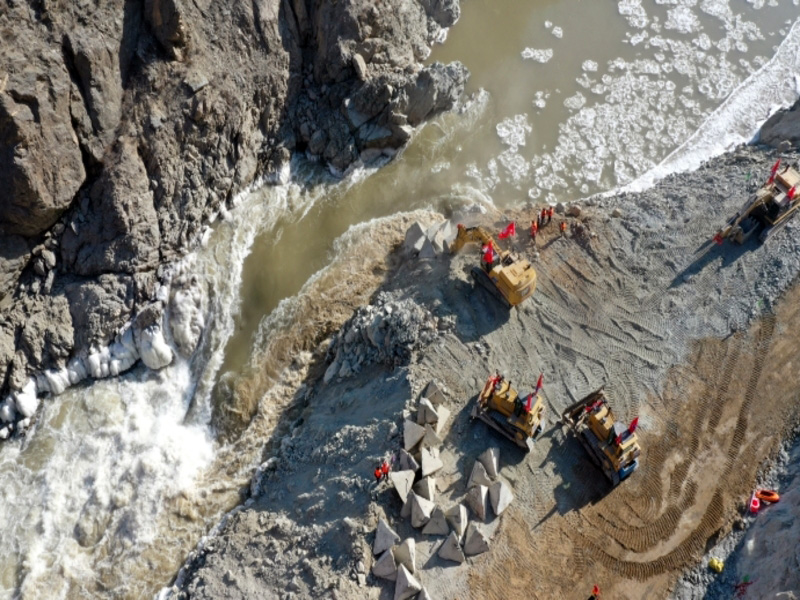(TibetanReview.net, Jul05’22) – A 19th century Tibetan Buddhist monastery and residents of more than 20 villages spread over three counties in Tsolho (Chinese: Hainan) prefecture of Qinghai Province face an uncertain future as China has finalised a decision at the highest level to build a major hydropower dam over the Yellow River (Tibetan: Machu) flowing through their Karmo Yeakhyil valley area.
The Atsok Gon Dechen Choekhor Ling, named after its 1889 founder Atsok Choktrul Kunchok Choedar, is located at a bend of the Yellow River in the prefecture’s Dragkar (also known as Tsigorthang or Zhinghe, Chinese: Xinghai) County. The monastery had 157 student-monks since 2021 after China banned it from enrolling students younger than 18.
The official plan is to relocate the monastery at a mountain area called Khyokar Naglo, some three to four kilometres from Palkha Township, its apparent current location, according to London-based Tibet campaign group Free Tibet on its freetibet.org website Jul 4.

Both the monastery and the local Tibetans have made repeated appeals to the authorities to review the relocation plans, including at successive meetings with officials, but to no avail. It is not clear yet when the relocation process will begin.
The Yangqu Hydropower Station is located on the mainstream of the Yellow River at the junction of Dragkar County and Mangra (or Konan, Chinese: Guinan) County. The cascading dam, being built at the cost of 17.06 billion yuan, will have a height of 150 metres, with an average power generation capacity of 4.732 billion kWh, the group noted.
The decision to build the hydropower construction project was approved on Nov 29, 2021 by the National Development and Reform Commission (NDRC), a top Ministerial level department which implements the Communist Party of China Central Committee’s policies and decisions on development and reform.
The main responsibility for the construction was handed over to the Electricity Engineering Construction Company of the Yellow River, or Machu Kungsi, which began site planning from around Dec 26, 2021.

Approved with the aim “to rationally develop and utilise the hydropower resources in the upper reaches of the Yellow River and avoid the waste of existing projects”, the construction is expected to be completed within two years, the group said. It was previously an illegal project begun in Jun 2010.
Citing the official approval document Qinghai Yellow River Yangqu Hydropower Station Project Approval: Development and Reform Energy [2021] No. 1739, the group said a total of 80,691 mu (approximately 53 square kilometres) of land spanning across 22 villages in three counties – including Dragkar – will be expropriated, affecting 15,555 people.
Earlier, from 2014 to 2017, nearly 400 Chinese workers were employed to build the 2418-metre-long Gama Yangqu River Highway Bridge to facilitate the construction of the Yangqu Hydropower Dam, the group said.


